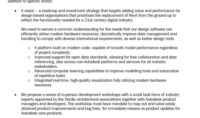After announcing a technology partnership with Autodesk last November, virtual reality and gaming engine platform producer Unity Technologies has introduced its first-ever product for the construction industry.
Unity Reflect allows architects, engineers and virtual construction professionals to take Autodesk Revit BIM into the Unity engine, with all of its geometry and parametric modeling data intact, with one click of a publish button. Hitting publish also shares it to any project team members. That 3D model is then live-linked to its Unity counterpart, and any update or change made in Autodesk Revit is reflected in the updated Unity model. All project stakeholders can view the shared Unity model on devices as varied as an iPad, HoloLens or laptop.
There were previously cloud services and other third-party solutions that allowed a parametric model to be transferred to the Unity engine, but never with the ease of a single click or of continuous updates.
“The question to us was how to make this workflow better,” says Tim McDonough, Unity’s general manager for Industrial, “to take Revit models to Unity. Users were working on these models collaboratively, and instantaneous feedback is necessary.”
McDonough said that Unity had been playing catch-up to its users, who had been applying Unity Pro Software to design and construction for at least five years. He said that Unity would be willing to work with other providers of BIM authoring tools to allow similar workflows to be built, but that Autodesk Revit was the first case for a product such as Unity Reflect because so many users were already creating models with it.
“The phenomenon always was there were a number of young guys who were straight out of school that learned Unity Pro there and brought it to their workplace for everything from complex data visualization, product design, visualizations and VR walk-throughs of building projects,” says McDonough. “What we announced [in November] was basic, and this is the culmination of that.”
Autodesk executives said that writing code for Unity Reflect and all of the code development was done by Unity’s developers. Autodesk provided access to its native file formats and the Revit application program interface.
“Most of the work came from the Unity side. We actually have open and extensible API. They wrote this add-in that does that single-button push. They did most of the heavy lifting with the Revit API,” says Harlan Brumm, Revit product manager at Autodesk. “We didn’t want this to be like the existing workflows today that are cumbersome and take a lot of different software to move data into the application.”
Brumm says this type of partnership is where Autodesk sees the construction industry going, with more open sharing of data from Revit to other tools. He said Autodesk 3ds Max and Autodesk Maya are other software products that could benefit from a one-click link to Unity and that he has talked with his Unity counterparts about multiple other potential workflow products.
“The real pain is how do you move data between these applications without additional steps. Customers wanted it seamless,” Brumm says. “This benefit is keeping it in sync and simple and expanding its use to more people. … You shouldn’t need an advanced degree in coding to do this.”
Autodesk CEO Andrew Anagnost said integrating its construction products with real-time 3D technology was an important priority, rather than building its own gaming engines and visualization tools.







Post a comment to this article
Report Abusive Comment